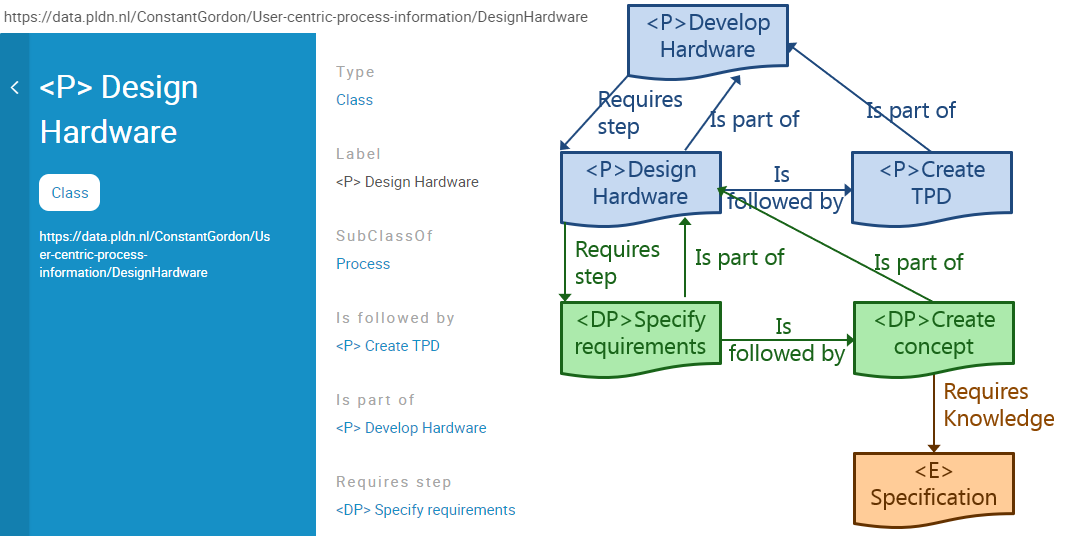To effectively deliver information to someone, it has to be complete, to the point and correct.
One important element is that you deliver only what is needed, but also provide guidance to what he or she may need next.
An example: You need instructions to perform a task. To help you do this task you may need an explanation why; and you may need reference information to select from the right options.
This is basically the fundamentals of the DITA topic types; Task, Concept, Reference.

To help engineers understand the processes that they work with and make the right choices, this will greatly help. But navigating through the options easily becomes a challenge. This is where linked data technology comes to help. By making the relation between the information topics specific and clear, it becomes easier to navigate.
An instruction is supported by an explanation (a task is supported by a concept).
An instruction is followed by another instruction (a task is followed by another task).
Now we can see which piece of information belongs with which.
Of course, there are always challenges, for example: a process description, is that a task or a concept. Normally I would choose for a concept as it explains how detailed tasks relate to each other. But to separate a process description from an explanation about the purpose of an object is something different.
To build an example I used
- 17 tasks giving detailed instructions (<I>)
- 6 concepts about process step explanations (<P>)
- 14 concepts presenting more detailed process step explanations (<DP>)
- 6 concepts explaining how a thing is used or what a term means (<E>)
- 4 relation types;
- is followed by
- is part of,
- requires knowledge
- requires step

Because all information objects are specific, and all relation types are defined, the model can be expanded whilst maintaining good navigation possibility.